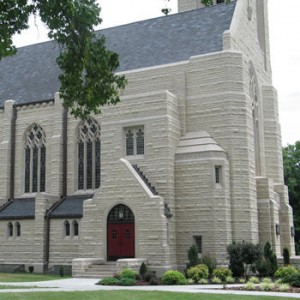March, 2010 archive
Standardized Test Redux 0
March 21, 2010
Colleges Explore Shades of Gray in Making Entrance Tests Optional
Ursinus College considered fairness and ideals as well as marketing and logistics
Sarah Bones for The Chronicle
 Last year Richard DiFeliciantonio (right), vice president for enrollment at Ursinus College, hired a new admissions director, Richard Floyd, whose questions about the role of test scores prompted Ursinus to reconsider its stance.
Last year Richard DiFeliciantonio (right), vice president for enrollment at Ursinus College, hired a new admissions director, Richard Floyd, whose questions about the role of test scores prompted Ursinus to reconsider its stance.
By Eric Hoover
When a college stops requiring standardized admissions tests, no rainbow magically appears. Its endowment doesn’t grow, and its costs don’t shrink. Presidents still worry, professors still complain, and students still drink too much on Saturday nights.
Nonetheless, tales of going “test optional” often have a romantic tinge. In them, admissions deans, worried about equity and anxious teenagers, finally decide to do the right thing by casting off those terrible tests. After that, everything on the campus gets better.
Like many stories, this one invites other interpretations. A popular reading is that competition alone compels colleges to drop their ACT and SAT requirements. In this rendering, colleges care more about their image than anything else.
Fifteen years ago, colleges could still expect to make waves when they adopted test-optional policies. Over the last decade, however, dozens of private liberal-arts colleges have nixed their testing requirements, and these days the announcements cause more of a shrug than a splash.
Nonetheless, the choice remains controversial, often cast as either a noble move or a deceptive one.
In fact, the decision typically melds various motives, arising from a place where marketing and mission overlap. Data often drive a change of heart, but numbers alone don’t always explain whyor when a college alters its testing policy. Often the switch happens gradually, following prolonged discussions, a change in leadership, or some other institutional shift. Like most issues in admissions, the decision is often more complicated than it might seem.
Five Extraordinary Colleges You Know Very Little About…until now 0
 According to the Department of Education, there are 2364 four-year colleges in the United States. Of those, 612 are public colleges. I dare say that about 300 of them would be at least somewhat familiar to about 80% of the public.
According to the Department of Education, there are 2364 four-year colleges in the United States. Of those, 612 are public colleges. I dare say that about 300 of them would be at least somewhat familiar to about 80% of the public.
What about the 2064 unknown colleges. Which of these colleges are worth exploring? When all is said and done, does it matter that much where one goes to college? If you are not looking for a specific program only offered at a particular college, it matters less than you think. What really matters is what you do when you get there.
Some students realize that it might not be a bad idea to look at two-year colleges as well. And some of them are looking at two-year colleges outside of the region in which they live. If there is a community college that is beyond commuting distance but has a specific program you are interested in taking, particularly those with a Phi Theta Kappa Honor Society chapter, you can rent an apartment near the campus. Many colleges such as Greenfield Community College in Massachusetts or the Ivy Tech Community College system in Indiana, can recommend student housing for such students.

Occasionally I like to step back and look at the colleges whose offerings make them stand out. It does not mean they are right for you. But one or more of them could be.
Let me take you on a brief tour of just five of them now.
They are not in any particular order, but # 1 on the list is a two-year college. In fact, this two-year college is tougher to gain admission than is Harvard. Though they are shocked at first, I get a kick out of telling some extremely bright students that they will not have a prayer in being accepted to this college. Here is why.
 1.) Deep Springs College since 1917 accepted only thirteen men into its two-year program each year. That is, until the Class of 2017 applies at which time it may accept female applications. (As of 1/15/17 the decision to accept women has not been made.) It is a rigorous admissions process including several interviews and multiple essays. (The average applicant’s SAT score is 1450.) It is a working cattle and alfalfa ranch but one with a rigorous liberal arts curriculum in the High Desert region of Southern California.
1.) Deep Springs College since 1917 accepted only thirteen men into its two-year program each year. That is, until the Class of 2017 applies at which time it may accept female applications. (As of 1/15/17 the decision to accept women has not been made.) It is a rigorous admissions process including several interviews and multiple essays. (The average applicant’s SAT score is 1450.) It is a working cattle and alfalfa ranch but one with a rigorous liberal arts curriculum in the High Desert region of Southern California.
I have worked with two students in years past who earned their Associate of Arts degree there when it was all-male…until 2018! Yes, young women can now apply to a college where only an AA degree is earned and many applicants, who were also accepted to Ivies, Stanford, and the like, choose to spend two full years in the high desert herding cattle, driving farm tractors, washing dishes and learning how to think critically by means of a very deep academic curriculum from top-flight professors who love to teach there. I have two videos on this page. Be sure to watch this one and the one below.
It was founded by an early California pioneer, LL Nunn in 1917 on his idea that the three pillars… academics, labor, and self-governance help young men prepare themselves for lives of service to humanity. The school’s 26 students, along with its staff and faculty, form a close community. The college operates on the belief that manual labor and political deliberation are integral parts of a comprehensive liberal arts education.
Plus, it is FREE. Each student attends for two years and receives a full scholarship valued at over $50,000 per year. Afterward, most earn their undergraduate and graduate degrees at the world’s most prestigious four-year institutions. It is practically a slam dunk admission transition. Getting a first-class education, and saving up to $110,000 in the process is not a bad way to spend and invest in two years.
Now you know why I can no longer say to some students that they will not have a prayer to being admitted. One intellectually curious young woman I shared this fact with in 1998, was undeterred. Because her goal is to become a college English professor, she saw that as way to be part of the Deep Springs community. (Professors from schools like Stanford, Harvard, and Yale go there to teach periodically for a semester or two.)
Therefore, if you are a male, or female, and intrigued by the concept, why not take 30-minute look at a college like no other.
 2.) Another college that is respected for its philosophy of combining work with learning is The College of the Ozarks. COFO is committed to a five-fold mission of encouraging academic, Christian, cultural, vocational, and patriotic growth in its students.
2.) Another college that is respected for its philosophy of combining work with learning is The College of the Ozarks. COFO is committed to a five-fold mission of encouraging academic, Christian, cultural, vocational, and patriotic growth in its students.
All full-time students work rather than pay for their tuition. The college discourages debt and, like Hillsdale College, does not participate in any government loan programs. On the other hand COFO does participate in federal grant programs so the FAFSA will need to be filed, to determine eligibility. (Hillsdale does not use the FAFSA.)
Academic offerings are surprisingly broad as you can see here. This combined with the strong work program makes it a valuable experience and excellent preparation for a fulfilling life.
By the way, College of the Ozarks has been named a Stone-Cold Sober School by the Princeton Review for ten consecutive years. Alcohol and drugs are strictly prohibited on and off-campus. Therefore, a student who applies to the school with the nickname Hard Work U. and looks forward to spring breaks in Cancun is unlikely to be a good fit for this college.
